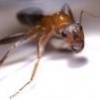I don't mean releasing native ants that were in captivity. Which is a slightly different subject.
I mean, in areas invaded by Argentine ants, and they are attacking native ant colonies with no chance of success (or bulldozers are going over them). Do you think its okay to take those colonies (which have at that point 100% chance of death), release them nearby (within an hour's walk) and attempt to get them to expand in an area surrounded by Argentine ants? By that, there is 0 native ants in the area at all, all non-native or invasive ants.
I have done this with Pogonomyrmex californicus, Forelius mccooki/pruinosus and Monomorium ergatogyna and found HUGE success at doing this. The P. californicus were being invaded by hordes of Argentine ants. Forelius were soon to be bulldozed for a new housing community or an apartment complex and the M. ergatogyna were near the Forelius.
It has been a few months now, and both the Forelius and Monomorium ergatogyna have SUCCESSFULLY colonized the local area by my apartment unit and have driven off the Argentine ants.
The P. californicus colonies have both grown quite large now too. One has even dug under the road to the other side of the street.
Does anyone see a problem with this? Or do you think its better to let the native ants die, do nothing to help them and let invasive ants take over? Keeping in mind, pest control doesn't really care about Argentine ants anymore and state budget, there is barely any pest control anymore (I almost never see them like I used to).
Edited by Vendayn, August 30 2015 - 10:25 PM.























